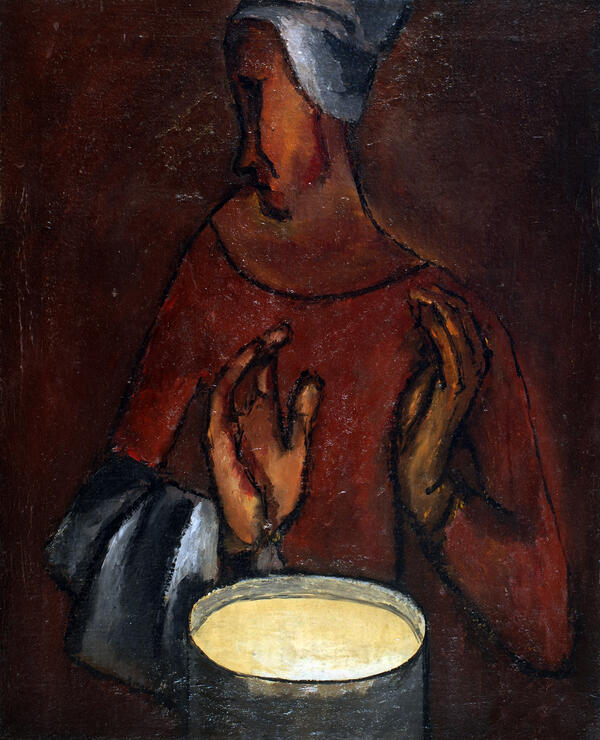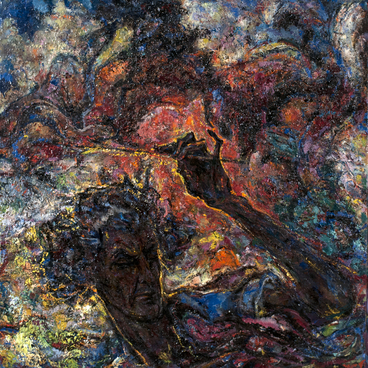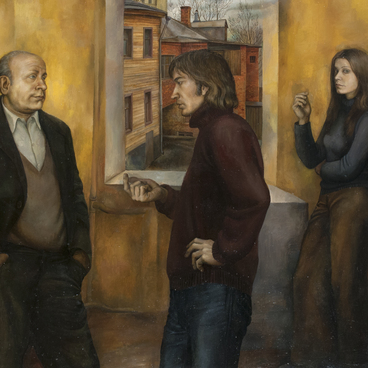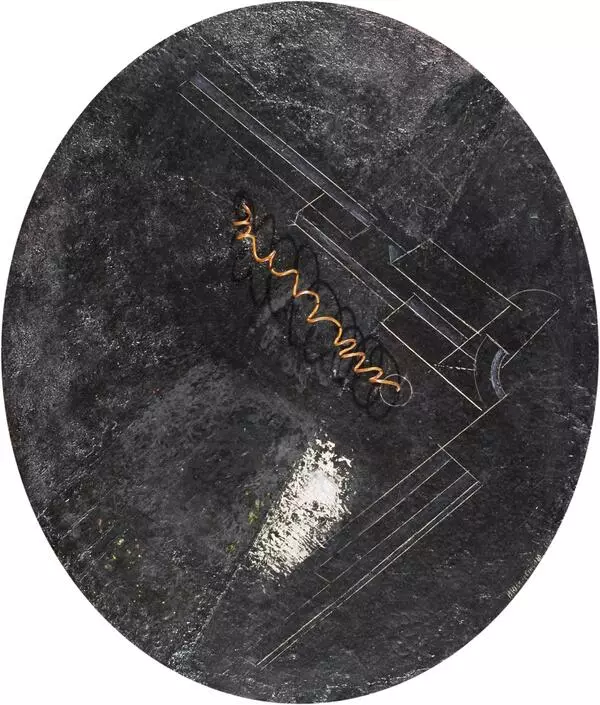Valentin Yustitskiy played one of the most vivid and prominent roles in the artistic life of Saratov in the twenties: he was an unusually gifted, artistic man who took passion in studying the problems in new forms of contemporary art. He honed his first professional skills in Vilna, and then took private sculpture lessons in Paris. He actively participated in exhibitions held by the Moscow Association of Artists, the futurist exhibition dubbed ‘Shop’, and the ‘Unicorn’ art gallery; being innately very perceptive, Yustitskiy went through passions for primitivism, cubism, futurism, and symbolism. In 1918, A.V. Lunacharskiy, who was the People’s Commissar for Education, sent him to Saratov to help “create art for the proletariat”. The artist headed the painting and
drawing studio at the Saratov Proletariat Cultural and Educational Organization, and a bit later became a professor at the Free State Art Workshops.In Saratov, Yustitskiy invariably found himself at the very center of all significant artistic endeavors and events. A man of great ingenuity and energy, he organized the POEKHMA Theater in Saratov, conceived as an arena for the search for new, entertaining forms, often parodying traditional theatrical forms; he then created a
futuristic “percussion band”. The artist’s intense experiments in those years were in line with a wide range of quests embarked upon by the Russian avant-garde from the late 1910s to the early 1920s. Going down the path from thingness to constructs, he returned to a revitalized figurativeness, enriched by his formalistic experiments.
The desire to find a new style, to find adequately modern means of expressiveness, to impart a particular solidity to the composition, and a certain timeless epicism to the images, can be clearly perceived in two very significant canvases done by the master in the early 1920s: Angelus and The Milkmaid.
When creating the image, the artist acted using a method involving artistic generalization, in which all components are subject to a strict system of interrelationships. The composition’s core is a female figure, barely protruding against a thick, brown background. The woman holds her hands over a vessel with milk.
When creating the image, the artist acted using a method involving artistic generalization, in which all components are subject to a strict system of interrelationships. The composition’s core is a female figure, barely protruding against a thick, brown background. The woman holds her hands over a vessel with milk.
Yustitskiy pushes the image forward, increasing the dimensions and weight of the individual forms. The face is filled with corporal tangibility, and the size of the hands, raised in almost a gesture of prayer, is exaggerated. The movement is filled with the significance of a solemn ritual, and the vessel itself is endowed with the symbolic meaning of the “cup of life”.
Far removed from everyday reality, Yustitskiy emphasizes the significance of the gesture and slows down the dynamics, as if suspending the action for a moment, giving the image of the milkmaid a solemnity that is not inherent to it. The conceptual content on this canvas is much more elevated than the subject itself.
The Milkmaid is painted concisely and austerely, using a restrained, almost monochromatic palette. The color is inseparable from the powerfully constructed form. The rhythm of work is slow, heavy. The intensity of the muted colors, and the expressiveness of the painting’s texture, also work to create the artistic image, emphasizing the structurally figurative core. The immobile expression of the figure is combined with monumental gravitation for the color compositional structure on the canvas.




